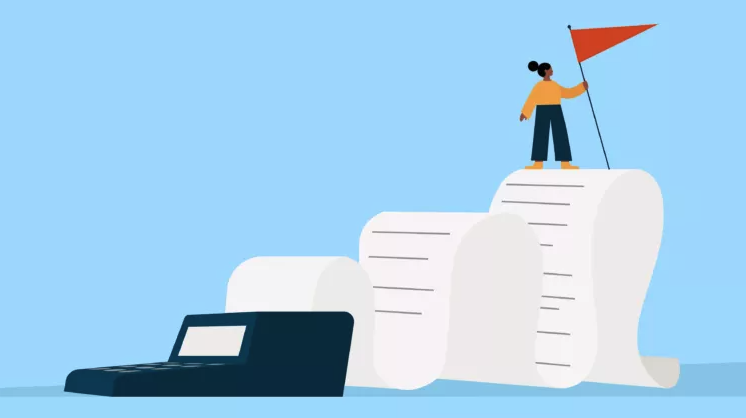My law practice is almost entirely paperless. Now, it wasn’t easy to get there. Ultimately, I can’t control what the clients bring in, which is usually old paper copies that I have to scan into my system. And I’m not perfect: as a sole practitioner, I often find myself accruing a backlog of documents that need digitising. But with paperless retainers, billing, and exchanging of drafts of pleadings and court orders via email, I can easily say that I have an almost entirely paperless law office.
The good news: I get paid faster, my clients get their work done faster, and I can carry my laptop home with me to sneak in a little bit of extra work here and there. I can even take it to the other side of the world and keep my practice going. Of course, this ability to work remotely with a paperless practice is incredibly relevant today.
Below, I’ll discuss the advantages of going paperless, the steps to switching to a paperless law office, and tools for paperless law firms.
Why should your law firm become paperless?

There are oh-so-many advantages to going paperless, especially for law firms. Below are just a few benefits I’ve experienced:
- Using a retainer with an electronic signature saves you at least one step—you won’t have to scan the document for record keeping. Plus, you can automatically send copies to all parties once they are signed.
- Digital processes are becoming commonplace in law firms.
- Assuming you have scanned all the documents into your case management software as text searchable PDFs, searching through a client’s file for information will only take seconds.
- When you’re in the room with the opposing lawyer, you can pull up a fact or document instantly.
- If you do flat-fee work, even the little things—like when a client calls on a random Thursday with a question about their file—are made easier by being able to quickly type in a query into my computer, rather than shuffle through filing cabinets.
- The more time you save, the less you bill to the client. Sure, that means less revenue for you, but it also means the client is happier. Long term, this client-centred approach means better reviews, more referrals, and more business for your firm.
- Lastly, I would be remiss not to mention the massive advantage of being able to work from anywhere, at any time. For me, this meant I went to the Philippines last year for a month and ran my practice without anyone knowing that I was on the other side of the world.
The long and the short of it is that running a paperless practice is simpler than you think. It’s clearer than ever that the flexibility going paperless affords you is indispensable.
3 steps to going paperless
The first thing you will have to do, before thinking about software or scanners, is to buy in entirely. You need to commit 100% to eliminating paper, as does the rest of your law firm. A paperless system will require work up front, as well as some extra training time for everyone, but it does pay off in the long run.
Once you are ready, here are the steps you will have to take:
1. Switch to a paperless client onboarding system
Paperless systems begin before the client even signs a retainer. A brilliant way to handle all of the pre-legal stages of the case is to start with a customer relationship management (CRM) platform. There best lawyer-specific CRM out there integrates with Clio Manage: Clio’s own Clio Grow.
Learn more about automating your client onboarding process.
2. Create a system for ensuring files stay paperless
Once a client has retained you, you will want instant access to their entire file with only a few clicks. You’ll need a few tools to get this job done (more on specific recommendations to follow):
- A cloud-based storage system, such as Dropbox, OneDrive, or Clio Drive.
- Software to convert your scans to text-searchable PDFs.
- A brilliant scanner (or three).
Staying organised with dozens or hundreds of cases is tough with paper. At first, it’ll feel even more difficult with electronic files. (I promise, it’s easier once you get in the habit.)
3. Digitise your existing paper files
Finally, there is the issue of your backlog. Unless you are a brand-new law firm, you likely have dusty old files and a smattering of open cases.
Common sense should tell you to start with the files that you will actually need access to (current files). Then, digitise the files at a time when you can spare the paper copies (like the weekend). If you pay a service to digitise everything, you can get this done in a day or two. As an alternative, consider asking your staff for help.
You may like these posts
Paperless procedures and protocols

As mentioned above, you need to have procedures in place for all your law office’s paperless documents. These paperless procedures and protocols ensure that no files get lost and everything continues to be accessible.
Every firm is different. A 50-person firm, with individual legal assistants for every lawyer, will operate differently than a solo firm. That said, here is a sample outline you can use to develop your procedures:
1. Start digital wherever possible
Use electronic retainers and e-signatures, and save all legal work to the server in both Word and PDF.
2. Scan any paper as it comes in
To keep your law firm paperless, make it a policy to immediately scan any new paper documents as they come in and return the paper copies to the client. Store the scanned files in the actual client folders on the server, not in a big folder called “SCANS”.
3. Make sure you’re making text-searchable PDFs
Most modern scanning software will include an option to make the scanned PDF text searchable, but if not, use OCR software like Adobe Acrobat to convert it to a text searchable PDF.
4. Only keep documents that are required by local law to be in paper form
This might include deeds, wills, or other key documents with ink signatures. Even then, scan a copy into your system as a backup and for quick searches.
5. Keep your law firm’s paperless files organised
For file naming, it’s a matter of preference, but many smart people do: date, description, and initials of the responsible party (Example: “2020-04-08 Letter to OC re: QDRO WCP”).
Consider your directory structures as well. If you’re using Clio’s file storage, there is already a folder for each client. Litigators might create subfolders for pleadings, discovery, correspondence, etc., but do what works best for your practice.
6. Stop printing
This is easier said than done, especially for meetings. However, if you get into the habit of using a tablet or laptop to pull up your files from the server and to take your notes where the file lives (on your laptop or tablet, rather than paper), you’ll save yourself a lot of time when it comes to searching your notes later.
7. Stop faxes
Don’t worry, you can ease into it with tools that help you fax without a fax machine. I tell potential clients who ask to fax something over that they are the first person to ask to use it this year and it doesn’t work. Most can figure out how to scan it or post me a copy.
8. Generally avoid creating more paper
Email files or share them digitally when possible. Sharing files digitally is way easier today than it was even five years ago. Today, everyone has a smartphone. If you can use a smartphone, you can take all of your notes digitally, allowing your legal practice to stay paperless.
Exchange files with counsel and clients digitally, whenever possible
Believe me, sharing files in a paperless law firm is much easier than printing something off, putting it in an envelope, adding stamps, dropping it off in the mailbox, waiting three days for it to be transferred by the postman less than a mile down the street, then waiting for somebody’s assistant to pull it out of the post box, open the file, and hand it to the other side.
Technology and systems for a paperless law office

The biggest obstacle to starting a paperless law office, besides getting buy-in from your staff and building good habits, is attacking the backlog of files you want to digitise and ditching all the physical storage space.
Let’s talk about software. You’ll need software to turn scans into text-based PDFs, plus somewhere cloud-based to store all those files. There are great options, free and paid, to get this done.
Searchable PDF Software
The easiest and most user-friendly solution is to pay for commercial PDF software. Adobe Acrobat DC has a monthly subscription with the Pro PDF software and Adobe Sign, allowing you to batch-process all those scans sitting around in a folder. Pay a few assistants to come in on the weekend for a scanning binge, set Adobe loose on the files, and voilà—your backlog is complete, and your PDFs are now text searchable.
Hardware: Get a brilliant scanner (or three)
We’ve mentioned scanning, which, as you probably guessed, will require a scanner.
Consider a powerful desktop scanner for day-to-day filings, as clients will post or drop off paper files. Many lawyers swear by the Fujitsu ScanSnap series, though I’ve never seen fit to invest hundreds of dollars in a single-purpose device—even if they come with all the software and features you could ever need.
Somewhere to store your files
How about Clio Manage? If you are a Clio user, you get all the storage you could ever need with Clio. You can also set up an integration with a cloud storage provider, like OneDrive, Box, Dropbox, or Google Drive, first. Clio will create folders for all matters in the cloud drive. You can then drag files from your computer, and they’ll sync to both the cloud drive and Clio.
Not to mention Clio Drive allows you to create, access, and collaborate on your matter-related files from your desktop and securely sync them to Clio. You can keep your files backed up with secure, unlimited cloud storage.
Final notes on starting a paperless law office
Creating a paperless law office probably sounds like a big project. And it is. You and your entire staff will have to get used to storing things on a cloud drive instead of a paper folder in a filing cabinet. Instead of taking notes on a yellow pad, you should use a smartphone or tablet.
But here’s the major upside: When disaster strikes, a paperless, cloud-based system allows you to pick up your work from anywhere.
Ready to leap into being a paperless law firm? You should also be cloud-based. Curious about the benefits of cloud-based law firm software vs. on-premise servers? Read our blog.
We published this blog post in February 2024. Last updated: .
Categorized in: Business
Explore AI insights in our latest report
Our latest Legal Trends Report explores the shifting attitudes toward AI in the legal profession and the opportunities it brings for law firm billing, marketing, and more.
Read the report





